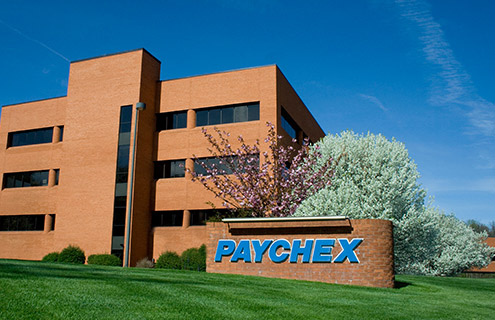Growth in jobs and wages at small businesses slowed in October, according to payroll giant Paychex, although job growth in the South increased for the second month in a row, and wages are set to go up in Florida after voters passed a minimum wage ballot initiative in Tuesday’s election. Another payroll service provider, Gusto, also reported a slowdown in employment growth at small businesses Thursday.
The latest Paychex | IHS Markit Small Business Employment Watch, released Tuesday, indicated a moderation in its small-business hiring index compared to September, slipping 0.13 percent nationally to 94.32. Hourly earnings growth was 2.88 percent in October, slowing to the kind of pre-pandemic levels last seen in early 2020. Weekly hours worked remained positive, up 0.38 percent from last year, although both one-month and three-month annualized growth posted negative rates in October.
The South was still the top-ranked region for small-business hiring and has improved its pace of job growth for the second consecutive month. On the other hand, the West slowed 0.26 percent in October and 0.99 percent during the past quarter. The Northeast has ranked in first place among regions in terms of growth in weekly hours worked for the past six months.
The small-business job growth number grew nationally a bit, but has been relatively flat in recent months, according to Frank Fiorille, vice president of risk management, compliance, and data analytics at Paychex.
“We had a little bump up last month, and then this month it was down a little bit,” he said in an interview Thursday. “It’s very region-, city- and state-nuanced. For example this past month the Northeast was good. However, the West was the underperformer for the month. We saw some weakness in the West, which really brought the index down to that bottom level that we saw when COVID first hit. It came down to the same level that we had when the financial crisis hit, but it’s kind of holding in there.”
Florida and Texas were the top two states in October for small-business employment growth. Meanwhile, New Jersey, Massachusetts and Pennsylvania led the way in hourly earnings growth among the states. Hourly earnings growth was a strong 3.89 percent in the construction industry, and the sector led the way in employment growth as well in October. At the other end of the scale, employment growth in the leisure and hospitality industry was well below all other sectors, down 0.48 percent in October from September.
“We’re seeing the growth in wages flatten out a little bit and slow down,” said Fiorille. “Businesses are bringing back more employees, which typically are the ones that were furloughed or laid off, in the low-wage entry level, so if they come back in, that lowers the average hourly earnings number. I think that’s probably a positive thing.”
Some small businesses are even having trouble finding employees, according to the Federal Reserve’s latest “Beige Book.”
“It’s kind of like what it was before COVID,” said Fiorille. “That’s due to several reasons: not wanting to go back to work from a health perspective, and school issues with their children.”
To attract employees who are reluctant to return to work, some businesses are offering more scheduling flexibility. They may also need to start raising their wages, with Florida voters approving a ballot initiative Tuesday to raise the state’s minimum wage to $15 an hour, phasing it in over the next few years until 2026, up from $8.56.
“If you think about it, it’s a pretty big jump up,” said Fiorille. “It’s phased in over four or five years, but it’s still a pretty aggressive move for Florida to go right to $15. The thought is that probably a lot of states will copy that as things go on.”
Besides the uncertain results of the presidential election, he advises accountants to keep an eye out for other state developments, like the ballot initiative that passed in California allowing companies like Uber, Lyft and DoorDash to continue to pay their gig economy workers as independent contractors rather than as employees, but with some extra conditions entitling gig workers to receive overtime pay and paid sick leave.
“People are all focused on the presidential election and what’s happening in the Senate, but there was a lot of stuff that happened within various states,” said Fiorille.
Gusto data
Separately, another payroll provider, Gusto, released its own small business employment data for October on Thursday. It saw low growth for the fourth month in a row, growing only 1.4 percent in October, 1.1 percent in September, 1.0 percent in August, and 1.2 percent in July. In contrast to Paychex, Gusto found that rehiring of furloughed workers has largely stalled as business owners wait to see what winter has in store. For workers who have been furloughed at all since the pandemic began, only 36 percent have returned to work and 21 percent of those remain in limbo and are still furloughed.
Cities in the Southeast saw the strongest headcount growth in October, according to Gusto, with seven of the top 10 cities seeing the biggest growth located in the South. Memphis topped the list for two consecutive months in headcount growth with 4.53 percent in October and 3.54 percent in September.
Headcount growth in 2020 was 50 percent lower than in prior years. Headcount across all industries dropped precipitously this past spring, bottoming out at -5 percent in early April. By October, headcount had recovered to +5 percent above pre-COVID levels, but small businesses still haven’t made up for all the ground lost due to the pandemic. When Gusto looked at headcount growth in 2020 compared to expectations based on the prior three years of data, this year’s headcount was 50 percent behind where it should be.